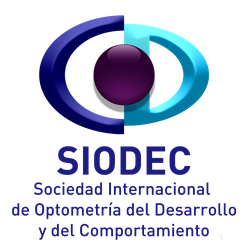MAIN CONFERENCE
HELP TO LISTEN:
Auditory processing for learning
Our mission, as optometrists, is to contribute to consolidating the visual skills that every child needs to develop, learn, and interact with their environment in a constructive way. The optometrist, a health professional with a multifaceted perspective, understands the need to train in areas of knowledge complementary to optometry, from photostimulation to neurofeedback, including the integration of primitive reflexes as a key factor for effective motor development and optimal lateral organization to unleash the full potential of the individual.
In this paradigm, one must consider the ontogenetic primacy of the vestibular and auditory systems, which are functional between 12 and 24 weeks of gestation, upon which the information that the neonate receives upon opening their eyes is encoded.
The vestibular system is our sensory system for gravity, a reference point for all other senses and actions. Its proper development conditions not only the stabilization of gaze, ocular motility, binocular coordination, and visual processing, but also body awareness, spatial perception, emotional modulation, memory, cognitive functions, and multisensory integration.
The optimal functioning of the auditory system directly influences fixation, central vision, visual perception, and literacy. One can hear well and listen poorly. Central Auditory Processing (PAC) is the ability to recognize, analyze, interpret, and integrate the information that the auditory system delivers to the brain for communicative purposes. There is an undeniable relationship between auditory processing and the cognitive functions necessary for academic learning.
However, there is barely any awareness of this among parents and health and education professionals, who are the ones best able to detect possible central auditory processing deficits (CAPD) that hinder the child's daily life and impede their performance in school.
Although DPAC may appear in isolation, it is often associated with common developmental deficits, such as autism spectrum disorder (ASD), attention deficit hyperactivity disorder (ADHD), dyslexia, and specific language impairment (SLI). In this context, it would be very useful to have tools for the early and differential detection of listening difficulties within the optometric evaluation protocol, to support decision-making in each particular case regarding possible referral and the order of interdisciplinary therapeutic intervention.
There are two objectives for my participation in the IX International Congress of Developmental Optometry, Vision Therapy, and Rehabilitation: First, to deepen the close link that exists between auditory and visual processing, due to the profound impact that their dysfunctions have on the well-being and learning of the child. Based on this foundation, to present some of the detection and screening tools for APD that can be systematically incorporated into the optometric evaluation protocol, to identify the need to refer the patient to a specialist in vestibular, auditory, and/or central auditory processing, before starting visual therapy, in order to maximize the effectiveness of applying treatments in ontogenetic order.
Reserve your spot

